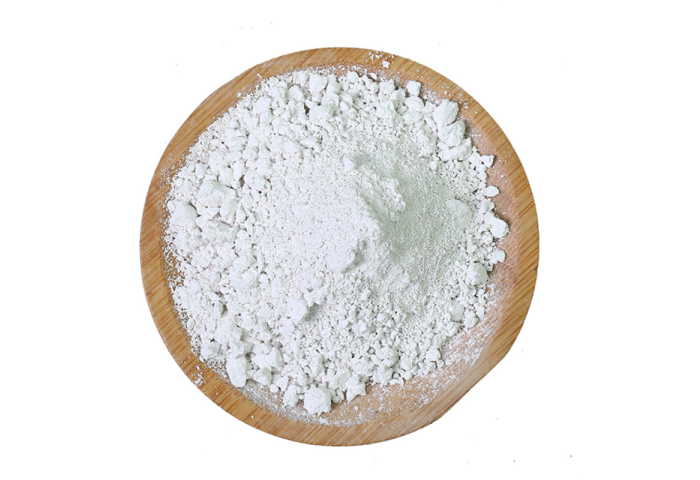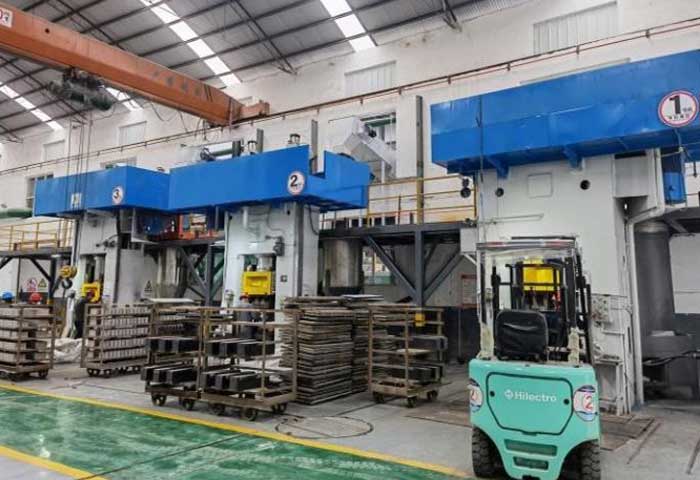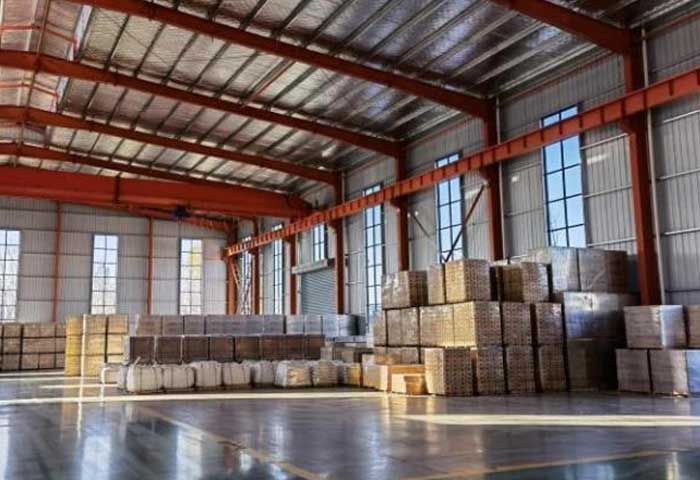규산지르코늄

Zirconium silicate is a high-quality and inexpensive ceramic glaze emulsifier, mainly used in the production of color glaze for architectural ceramics, sanitary ceramics, daily ceramics, and electric porcelain, with fine particle size, good dispersion, strong covering power, good emulsification, good fluidity, 등. It has strong abrasion resistance and a whitening effect.
PER Refractories Factory offers high-quality zirconium silicate products. We have been engaged in supplying industrial refractories for a long time and have a good reputation among a wide range of customer groups, and we ensure the quality and consistency of our products. Contact us for a competitive price of zirconium silicate.
Properties of Zirconium Silicate

Products Description
Products Name: 규산지르코늄
ZrO2+HfO2: 50%-65%
Specific Gravity: 4.69g/cm3
Fe2O3≤0.15
Tio2≤0.25
Refractive Index: 1.3-1.97
Zirconium Silicate is an odorless white or off-white powder. With a high refractive index of 1.93-2.01 and chemical stability performance, it is a high-quality and inexpensive emulsifier. It is widely used in the production of various architectural ceramics, sanitary ceramics, daily-use ceramics, first-class craft ceramics, 등. It is widely used in the processing and production of ceramic glazes and has a large application.
Zirconium silicate is also widely used in the production of ceramics because of its good chemical stability. It is therefore not affected by the firing atmosphere of ceramics, and it significantly improves the billet-glaze bonding properties and increases the hardness of ceramic glazes. Zirconium silicate is also further used in the production of color picture tubes in the television industry, emulsified glass in the glass industry, and enamel glazes for enamels.
Zirconium silicate has a high melting point: ~의 2,500 섭씨 온도, so it is also widely used in refractory materials, glass kiln zirconium tamping materials, pouring materials, and spray coatings.
When high-performance zirconium silicate has both whitening and stabilization conditions, it has better performance than conventional zirconium silicate in terms of zirconium silicate powder, particle morphology, particle size range, dispersion performance in media, and emulsion deflection after brick billet or glaze application.
The whitening effect of zirconium silicate is due to its formation of plagioclase, 등. after ceramic firing, which results in scattering of incident light waves, and this scattering is generally called large particle scattering or MieScattering.
Combining theoretical calculations and the actual situation of powder production, controlling the d50 value of high-performance zirconium silicate below 1.4um and d90 below 4.0um (based on the value measured by the Japanese laser particle analyzer) will produce the best emulsion whitening effect.
The concentrated particle size range is important in the whitening effect of zirconium silicate, and it is required to achieve as narrow a distribution of particles as possible during the grinding process of zirconium silicate.
Characteristics of Zirconium Silicate in Use
The results of the use of nano-scale zirconium silicate in the production of ceramics and functional materials show the following properties.
1. As an additive to ceramic glazes, zirconium silicate increases whiteness, 힘, 내마모성, hydrolysis resistance, and corrosion resistance with decreasing particle size within a certain size range, increases self-cleaning ability, and reduces dosage.
2. Because of the strong resistance to hydrolysis of nanoscale zirconium silicate powder, it can be used as a carrier of nano-functional powder in an aqueous environment. 예를 들어, the nano-energy stone prepared by HeXiang Company uses nano-grade zirconium silicate as a carrier.
3. Due to its strong oxidation resistance, nanoscale zirconium silicate can be used as a surface coating agent for functional powders. 예를 들어, the red glaze of Chinese red ceramics is made of nanoscale zirconium silicate as a coating agent, and the color is red and bright without fading.
4. Because of its high strength and good wear resistance, nano-grade zirconium silicate powder is a high-quality raw material for grinding media and engineering ceramics.
The Role of Zirconium Silicate in Glaze
The role of zirconium silicate in ceramic glaze: In the process of making ceramics, many materials are used, and each of them plays a different role on the left and right. One of them is zirconium silicate, which is used frequently.
1. Zirconium silicate is a non-toxic, tasteless white or off-white powder, the raw material is natural high-purity zirconium sand concentrate, and then processed through ultra-fine grinding, iron removal, titanium processing, appearance modification disposal, 등. It is a good quality, inexpensive ceramic glaze emulsifier, whitening agent, anti-seepage agent, and stabilizer.
2. Zirconium silicate is widely used in the production of various architectural ceramics, sanitary ceramics, daily-use ceramics, and first-class craft ceramics, 등. 그들 중, it is widely used in the processing and production of ceramic glaze and is applied in large quantities. Because of its chemical stability, zirconium silicate is not affected by the firing atmosphere of ceramics, and it can improve the billet-glaze bonding properties of ceramics and increase the hardness of ceramic glazes.
3. Zirconium silicate can also play a whitening role in ceramic glazes, because zirconium silicate will constitute plagioclase, 등. after ceramic firing, which can constitute scattering of incident light waves, thus achieving emulsification and whitening.
4. This scattering is generally called large particle scattering or Mie scattering, and if the d50 value of high-performance zirconium silicate is controlled below 1.4um and the d90 value is controlled below 4.0um, then it will have a very good emulsion and whitening effect.
5. To achieve a better whitening effect of zirconium silicate, it is important to have a concentrated particle size range, so the grinding process of zirconium silicate should be as narrowly distributed as possible.
6. Zirconium silicate is also frequently used in the production of color picture tubes for the television industry, emulsified glass for the glass industry, and enamel for enamels. Zirconium silicate has a high melting point of about 2500 섭씨 온도, so it is also widely used in refractory materials, glass kiln zirconium mashing materials, pouring materials, and spray coatings.
Adding zirconium silicate to glaze not only can improve the billet-glaze separation performance of ceramics, and improve the hardness of ceramic glaze, but also can play a whitening role.
PER 내화물 회사 소개


PER 내화물 회사 신미시에 위치, 허난성, 중국 내화물의 고향. 저희 회사는 R을 접목한 기술 기반의 내화물 기업입니다.&디, 생산, 매상, 및 기술 서비스. 국토의 풍부한 자원과 우수한 품질은 내화재 생산에 비할 데 없이 우수한 조건을 제공합니다.. 우리의 주요 제품은 다루기 힘든 점토 벽돌, 높은 반토 다루기 힘든 벽돌, 다루기 힘든 실리카 벽돌, 마그네슘 다루기 힘든 벽돌, 멀라이트 벽돌, 단열벽돌, 및 기타 고온 내성 제품.
회사소개 PER 내화물은 그린의 생산기지입니다., 에너지 절약, 친환경 신내화물. 우리 회사는 ISO9001을 통과했습니다.:2008 국제 품질 시스템 인증 및 GB/T24001-2004 / ISO14001:2004 환경 경영 시스템 인증, 기업품질 검사기관 인증. 우리의 제품은 이상에서 잘 판매됩니다 20 전 세계 국가. 그들은 야금술을 위한 선호하는 내화 제품입니다, 비철, 석유화학, 유리, 세라믹, 및 기타 내화물 산업.
